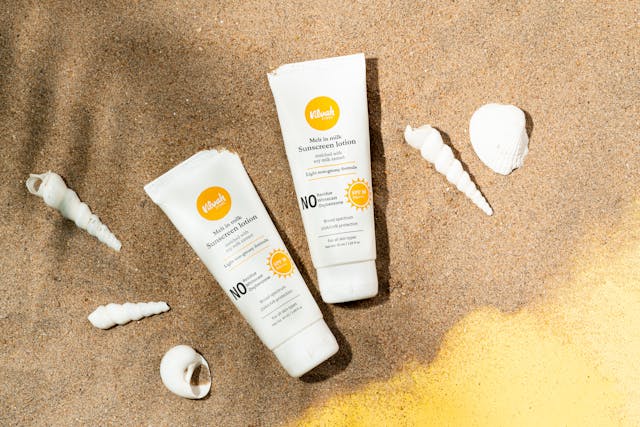
What is the worst a sunburn can get? A sunburn is usually only a first-degree burn because it only burns the outer layer of skin. However, a third-degree sunburn is technically possible.
There are different types of burn. The most common is a thermal burn, caused by heat. This is often from fire, or hot liquid. There are also electrical, chemical, and burns caused by radiation. A sunburn is a radiation burn, not a thermal burn. Let’s look at how the different types of burns cause injury. A thermal burn causes injury because energy is transferred from whatever is hot to the skin and the energy interferes with the proteins in the skin. The proteins can’t function, and they break down. Once this happens, the skin cells, and the tissue cells start to die. Our skin is vitally important because it is a protective barrier between us and the outside world. If parts of it start to die, bacteria and viruses can get in, we lose feeling, and we can’t regulate our temperature or sweat. Burns also trigger an immune response and an inflammatory response. Blood capillaries near the burned area enlarge to allow more fluid and white blood cells to get to the area. Chemicals cause damage through a different router, but the result is the same. The chemicals damage the cells and the tissue in the skin and it starts to die, causing the same problems as a thermal burn. A chemical burn often be worse because the thermal burn will stop once the heat is removed. A chemical burn can keep burning until the chemical can be removed. Electrical burns are similar to thermal burns. When a high electric current passes through a person, the body causes resistance, which causes heat. The same as the way a cable will heat up and melt if there is too much resistance. A radiation burn is different to a thermal burn because the damage is done by the radiation damaging the DNA in the cell, rather than the proteins. Once the DNA is damaged, the cell dies. The body’s reaction to this is the same as with a thermal burn so even though the cause is different, the result is the same.
The severity of the burn depends on which layer of the skin it has affected. Burns go from first-degree up to fourth-degree. A first-degree burn is only damage to the outer layer of skin, called the epidermis. It is not painful, but not unbearable, and not that serious. It will heal very quickly. A superficial second-degree burn goes through the epidermis into the edge of the dermis, the layer below the epidermis that contains tissue, hair follicles, sweat glands, and the nerves that give us touch and sensation. It is extremely painful, but will heal in a few weeks, probably leaving a scar. A deep second-degree burn goes deep into the dermis. There is less pain because it has destroyed some of the nerves. It will heal in about 8 weeks, but might need skin grafts. A third-degree burn goes right through the dermis and there is no pain because there are no nerves left. It won’t heal without help and will probably need surgery. A fourth-degree burn goes right through the skin and into the muscle and bone underneath. There is no pain and it will not heal. The area affected will be lost.
A sunburn is a radiation burn. It feels like the sun is cooking us and it should be a thermal burn, but it is actually caused by the UV light coming from the sun. UV light can penetrate our skin and break the bonds in our DNA. This kills the cells, and the body reacts by sending more blood and fluids into the area. That makes the area turn red and it also makes the burn feel hot. Sunburns hurt a lot because there are a lot of nerve endings in the skin.
Like any kind of burn, the damage gets worse the longer you are exposed to the source. If you keep your hand in a fire, you are going to get a far worse burn than if you pull it out really quickly. The same is true with a sunburn. The majority of sunburns are first-degree because they just affect the upper layer of skin, and you get out of the sun before there is time to do much more damage. If you stay out in direct sun for a really long time, or get bad sunburn and then go out again the next day, you could end up with a second-degree sunburn. If you kept doing this, you could technically get a third-degree sunburn, but that is very rare and not easy to do. However, if you had the setting on an artificial suntan bed up too high, or you got stuck in one, a third-degree sunburn would be possible. And that would require emergency treatment in a hospital. And this is what I learned today.
Sources
https://en.wikipedia.org/wiki/Burn
https://en.wikipedia.org/wiki/Dermis
https://medlineplus.gov/ency/article/000030.htm
https://www.nationwidechildrens.org/conditions/health-library/classification-of-burns
https://stanfordhealthcare.org/medical-conditions/skin-hair-and-nails/burns/stages.html
https://my.clevelandclinic.org/health/diseases/21858-sunburn
https://msktc.org/burn/factsheets/understanding-burn-injury
https://en.wikipedia.org/wiki/Radiation_burn
https://www.news-medical.net/life-sciences/The-Mechanism-of-DNA-Damage-by-UV-Radiation.aspx
https://www.seattlechildrens.org/conditions/a-z/sunburn
Photo by Vilvah Store: https://www.pexels.com/photo/tubes-of-sunscreen-lying-on-sand-between-seashells-16443631/
